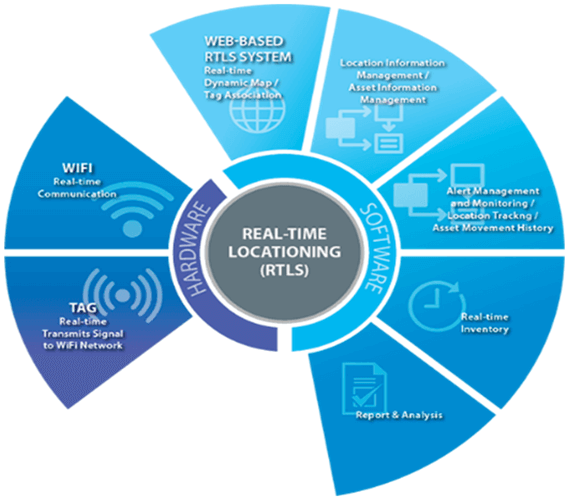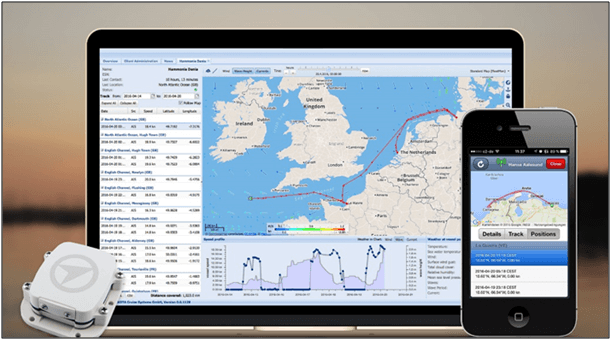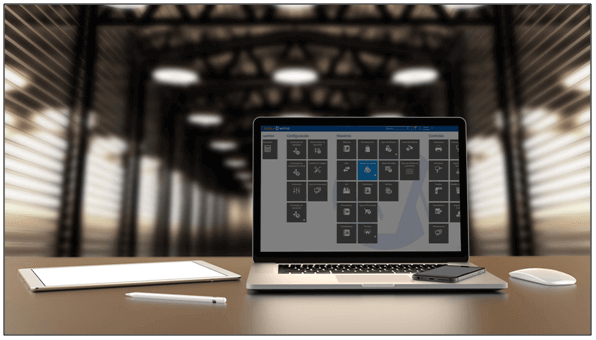The Real-Time Location System (RTLS) incorporates technology that identifies and tracks the geographic location of objects and humans in real-time. Generally, RTLS is placed within a building or facility area. A wireless Real-Time Location System tag or badge are often attached to an object or worn by personnel, the signal transmitted from the tag is received by one fixed point of location from a unique tag. RTLS includes location sensors/ readers, battery operated tags, application software, and network infrastructure.

Table of Contents
Communications on Service Provider
As we all know that communication is part of our daily lives. Communication is important in a business environment as there are several parties involved. They are always sending vital information to each other at all times. Hence we are using different form of communication to send a message.
A rich platform communications always stay communicated at all times and it will improve the productivity of staffs or users to reduce costs with the reliability of a link-up communication and supports localization one solution for all industries.

Available Tracking and Tracing Software
In view to maximise profits and gain the vital competitive edge over competitors, it’s vital to capitalized business with the newest technology. This means a good software can track and trace the business activities throughout the delivery process. The software not only maximizing efficiency in thedelivery and collection process, but also allows firms to offer much better customer service.
The web-based technologies software enable secure remote access to the system from any location at any real-time. These technologies have knowledge in both key areas of transport management and warehouse management which supply optimum performance and reliability on the traffic or warehouse system.

Satellite Navigation System
The satellite navigation system as implemented by the GPS technology offers real-time tracking information to the customers. Customers is able to check shipped items by using system to track their cargo information. Below displays a snapshot of the real-time tracking device.

IoT and RFID Tracking
Internet of Things (loT) is rapidly growing in a supply chain process. IoT is a system devices insert with sensors, software, and connectivity to allow data transfer, integration and interact through the network without requiring human-to-human or human-to-computer interaction. GPS, RFID, UWB, WiFi and Bluetooth are common technologies in IoT in supply chain.
As product tracking is always a daunting task in logistics. A simple action to locate the product can cost hours of lost productivity. Logistics sector has adopted technology such as RFID in the development of a tracking system. RFID technology is expanding to drive accuracy and value in the logistics supply chain. Adopting a RTLS system for tracking, locating and monitoring the product. It allows to track the real-time geographic location of equipment quickly. If product leaves an assign area, RTLS automatically triggers an alert.
Warehouse Management System (WMS)
The Warehouse Management Systems report provides realistic and functional details of the Warehouse. It allows you to trace every unit to the lowest level of inventory to improved order fulfillment and accuracy.
WMS also makes organizing and tracking shipments easier through automation and accuracy and workers are able to generate more work in less time because they have exactly what they need at the right time. A good Warehouse Management System can integrate with your existing business management system and incorporating with RTLS system.

Transport Management System (TMS)
A TMS software is often used in a supply chain management concerning transportation operation and also part of a resources planning system. TMS system offer track-and-trace capabilities for any products as they move through the network and provide a complete view of each stage in the transportation process by simplifying ways to manage.It provides real-time visibility of products from carriers and fleet using real-time updates from GPS data provided.
Through RTLS and WMS – TMS integration, will able to strengthen manufacturers and distributors for end-to-end visibility across shipping and warehouse functions like order processing, record access, and financial information.

Inventory Accuracy
Inventory accuracy is very important in achieving it. RTLS software helps you to attain and maintain 99.9% inventory accuracy without extra labor need and save on expensive inventory audits which will take hours or days. RTLS gives you all of the real time information needed within minutes.Not only that RTLS delivers a transparency of when and where inventory travels, there’s a possible efficiency saving of up to fifteen seconds on every pallet move by eliminating the necessity to manually scan a barcode whenever a pallet is picked up or dropped.
Improving Efficiency
On average, one pallet move takes 2 minutes of driver time. If your company ships 40,000 pallets per week with around two minutes per pallet move, the time spent moving those 40,000 pallets is 80,000 minutes, or 5333 hours.
Using RTLS provides real time, factual driver and pallet information enabling you to ascertain exactly where and how time is being lost. This enables you to create efficiency change. It also helps drivers reduce the time wasted looking for pallet and location, as real time location information is instantly available to them. Within 6 months of implementing RTLS, company could reduce the amount of FLTs required by 20%.
The full content is only visible to SIPMM members
Already a member? Please Login to continue reading.
References
Chan Thiam See, DLSM.(2019). “Real-Time Location System” (RTLS). Retrieved from SIPMM: https://publication.sipmm.edu.sg/essential-considerations-using-global-logistics-service-provider/#RealTime_Location_System_(RTLS), accessed 03/09/2020.
Ho Kek Ming, DLSM. (2019). “Six Essential Areas for an Integrated Logistics System”. Retrieved from SIPMM: https://publication.sipmm.edu.sg/six-essential-areas-integrated-logistics-system/#Warehouse_Management_System, accessed 03/09/2020.
Tan Shi Ying Jacelyn, ADPSM.(2019). “IoT and RFID Tracking”. Retrieved from SIPMM: https://publication.sipmm.edu.sg/technologies-effective-healthcare-supply-chain/, accessed 03/09/2020.



